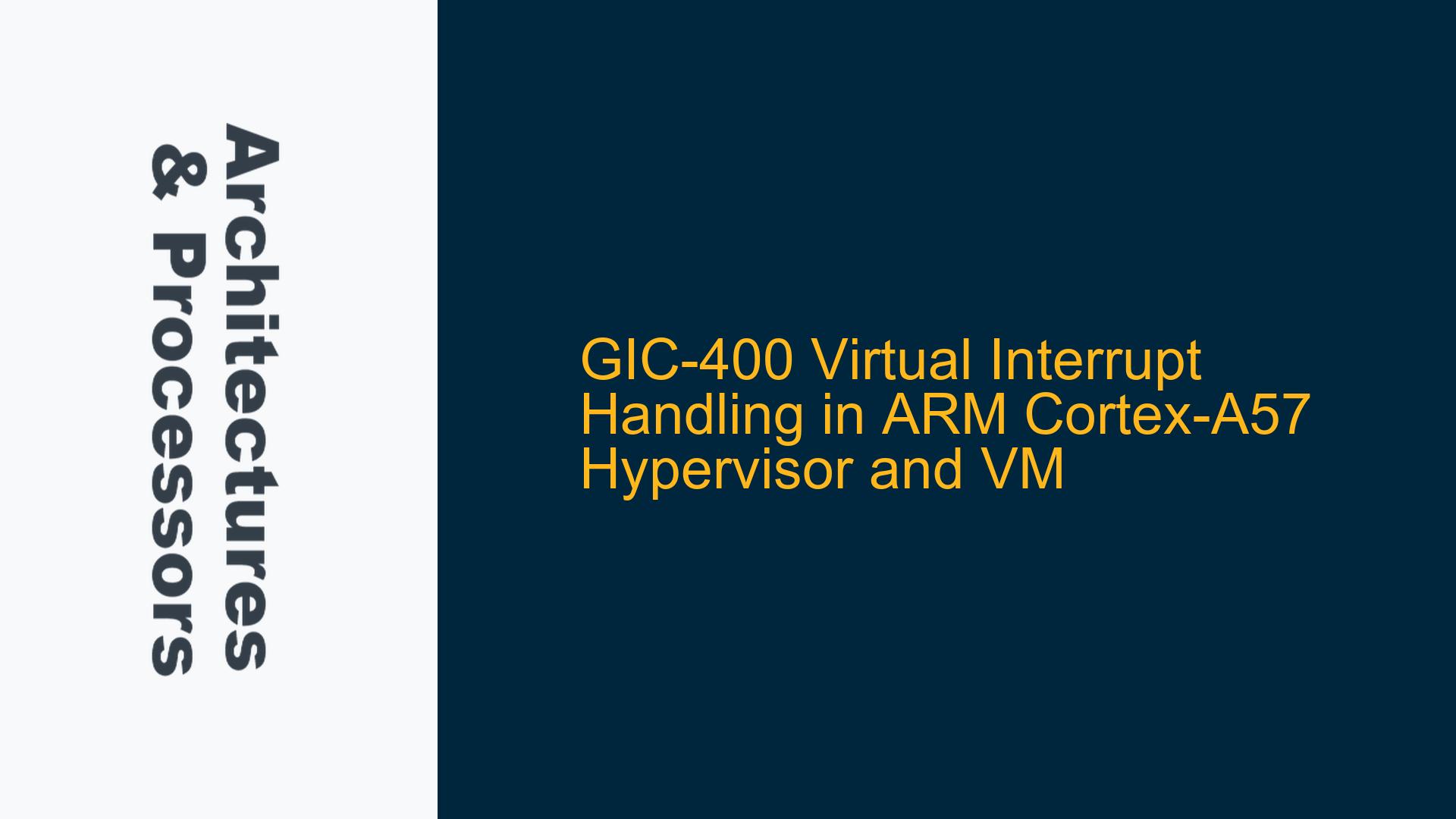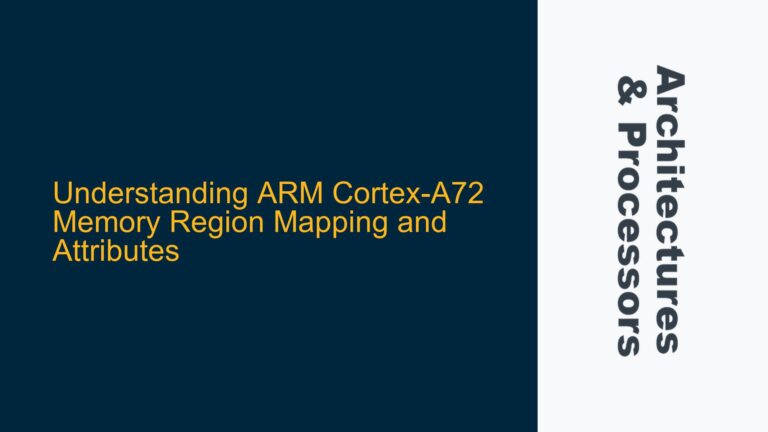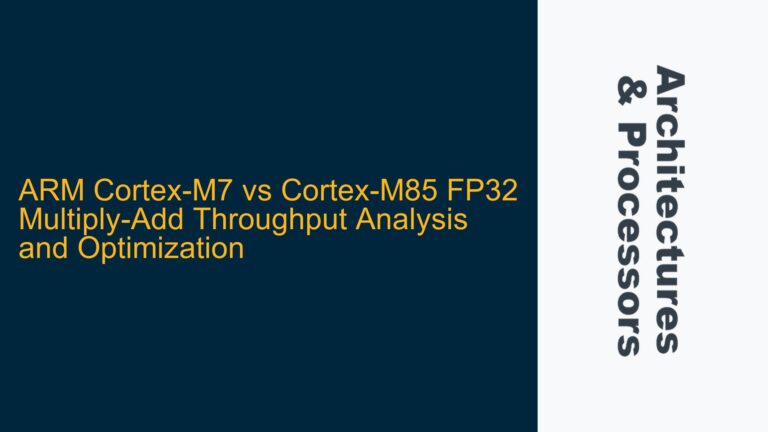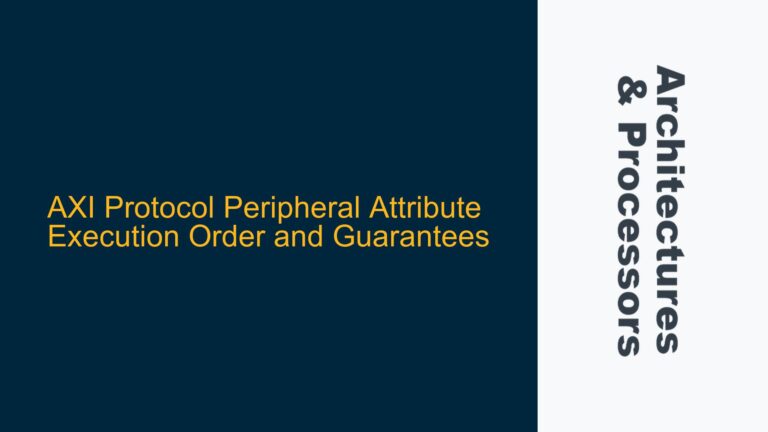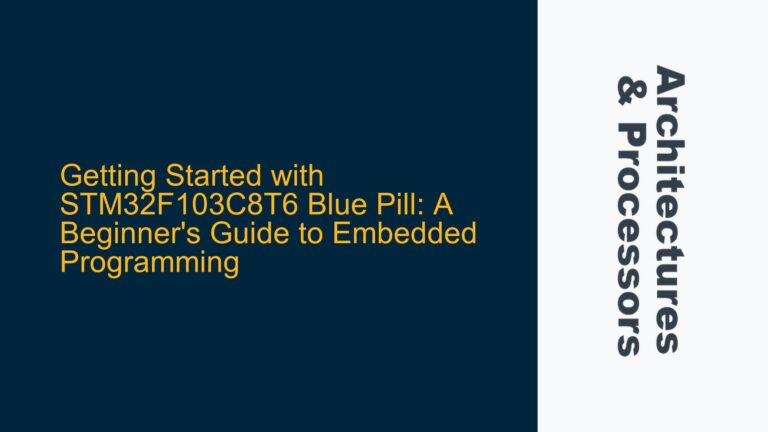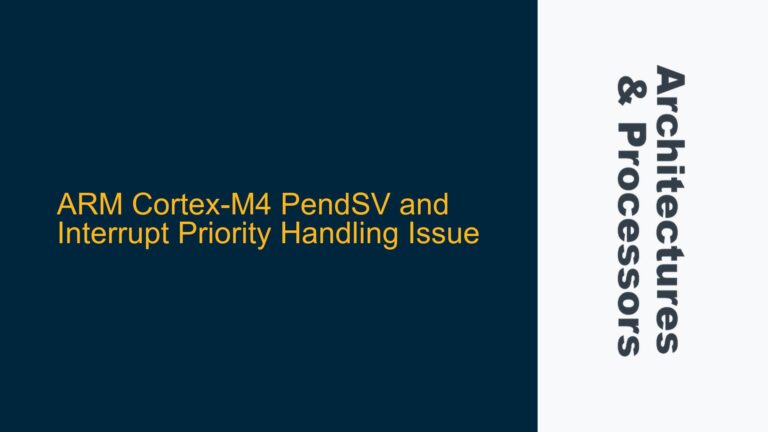GIC-400 Virtual Interrupt Handling Flow and Priority Management
The ARM Generic Interrupt Controller (GIC-400) is a critical component in managing interrupts for ARM Cortex-A57 processors, especially in virtualized environments. The GIC-400 supports virtualization extensions, enabling hypervisors to manage physical interrupts and inject virtual interrupts into Virtual Machines (VMs). Understanding the flow of interrupt handling, priority management, and the roles of the hypervisor and VM is essential for efficient system design and debugging.
When a physical interrupt is acknowledged by the hypervisor running at Exception Level 2 (EL2), it injects a corresponding virtual interrupt into the VM by writing to the List Registers in the virtual CPU interface. The hypervisor then writes to the GICC_EOIR (End of Interrupt Register) to drop the interrupt priority. This action raises questions about the meaning of "priority drop" and its implications on further interrupt handling. Additionally, the transition from hypervisor to VM interrupt handling involves several steps, including the VM acknowledging the interrupt by reading the GICV_IAR (Virtual Interrupt Acknowledge Register) and managing the interrupt state through GICV_EOIR (Virtual End of Interrupt Register) and GICV_DIR (Virtual Deactivate Interrupt Register).
The core issue revolves around understanding the sequence of operations, the role of priority management, and the interaction between the hypervisor and VM in handling virtual interrupts. Misconfigurations or misunderstandings in this flow can lead to interrupt handling inefficiencies, missed interrupts, or system instability.
Priority Drop Mechanism and Virtual Interrupt Signaling
The priority drop mechanism in the GIC-400 is a critical aspect of interrupt handling that ensures proper prioritization and nesting of interrupts. When the hypervisor writes to the GICC_EOIR register, it signals the end of interrupt handling for a specific interrupt, effectively dropping its priority. This action does not stop the interrupt controller from firing further interrupts but rather resets the running priority of the CPU interface. The running priority is used by the GIC to determine whether to take future interrupts. Only interrupts with a higher priority than the current running priority can be taken, ensuring that lower-priority interrupts do not preempt higher-priority ones.
In the context of virtualization, the hypervisor acknowledges the physical interrupt and forwards it to the VM by writing to the List Registers. This action causes the GIC to assert the virtual interrupt signal (vIRQ) to the VM. The ARM Cortex-A57 processor has separate physical IRQ and virtual IRQ (vIRQ) signal inputs. The GIC asserts the vIRQ signal to indicate a virtual interrupt to the VM. The List Register entry contains the physical ID of the original interrupt, allowing the GIC to correlate the virtual interrupt with its physical counterpart.
When the VM acknowledges the virtual interrupt by reading the GICV_IAR register, the interrupt moves to the Active state, and the CPU interface inherits the priority of the interrupt. The VM must then handle the interrupt and clear its active state by writing to the GICV_EOIR and GICV_DIR registers. The GIC uses the information in the List Register to update the state of the physical interrupt, avoiding the need for the hypervisor to re-enter the interrupt handling flow.
Implementing Virtual Interrupt Handling in Hypervisor and VM
To ensure proper virtual interrupt handling in a system using the GIC-400 and ARM Cortex-A57, the following steps should be followed:
-
Hypervisor Acknowledges Physical Interrupt: When a physical interrupt occurs, the hypervisor running at EL2 acknowledges the interrupt by reading the GICC_IAR (Interrupt Acknowledge Register). This action moves the interrupt to the Active state and sets the running priority of the CPU interface.
-
Hypervisor Injects Virtual Interrupt: The hypervisor writes to the List Registers in the virtual CPU interface to inject a corresponding virtual interrupt into the VM. This action causes the GIC to assert the vIRQ signal to the VM.
-
Hypervisor Drops Priority: The hypervisor writes to the GICC_EOIR register to drop the priority of the physical interrupt. This action resets the running priority of the CPU interface, allowing the hypervisor to receive further interrupts of the same or lower priority.
-
VM Acknowledges Virtual Interrupt: The VM acknowledges the virtual interrupt by reading the GICV_IAR register. This action moves the virtual interrupt to the Active state and sets the running priority of the virtual CPU interface.
-
VM Handles Interrupt: The VM executes the interrupt handler for the virtual interrupt. During this time, the interrupt remains in the Active state.
-
VM Ends and Deactivates Interrupt: After handling the interrupt, the VM writes to the GICV_EOIR register to signal the end of the interrupt handling. The VM must also write to the GICV_DIR register to deactivate the interrupt, clearing its Active state.
-
GIC Updates Physical Interrupt State: The GIC uses the information in the List Register to update the state of the physical interrupt, ensuring that the hypervisor does not need to re-enter the interrupt handling flow.
By following these steps, the hypervisor and VM can efficiently manage virtual interrupts, ensuring proper prioritization and handling of interrupts in a virtualized environment. Missteps in this process, such as failing to deactivate the interrupt or incorrectly managing priorities, can lead to interrupt handling issues and system instability. Proper implementation and understanding of the GIC-400’s virtualization extensions are crucial for reliable system operation.
